Bouillon cubes are a pantry staple for many home cooks.
Whether you prefer bouillon cubes or powder, this versatile homemade vegetable bouillon recipe is easy to customize with whatever vegetables are in season.
Making your own vegetable bouillon is a simple way to have a healthier option for adding flavor to soups, stews, rice dishes, and more.

TABLE OF CONTENTS
- What are bouillon cubes?
- Ingredients
- Step Instructions – Cubes or powder
- How to store bouillon
- How to use homemade bouillon
- FAQ’s
- Recipe card (Printable)
WHAT ARE BOUILLON CUBES?
Bouillon cubes (also sometimes called stock cubes) are compressed cubes of dehydrated vegetable or meat broth or stock.
They usually contain salt, flavors, stabilizers, and monosodium glutamate (MSG).
When added to hot water, bouillon cubes dissolve into a broth-like liquid intended for cooking.
While grocery store bought bouillon cubes offer convenience, making your own allows you to control the ingredients and ensure they are all natural.
Homemade Bouillon vs. store-bought
Making your own vegetable bouillon has several advantages over store-bought cubes.
The main reason is to have control over the ingredients, ensuring a bouillon without any preservatives or artificial additives.
Secondly, homemade bouillon allows you to customize the flavors and create unique combinations
Lastly but not less important homemade bouillon is not only healthier but also more economical in the long run.
vegetable bouillon recipe INGREDIENTS
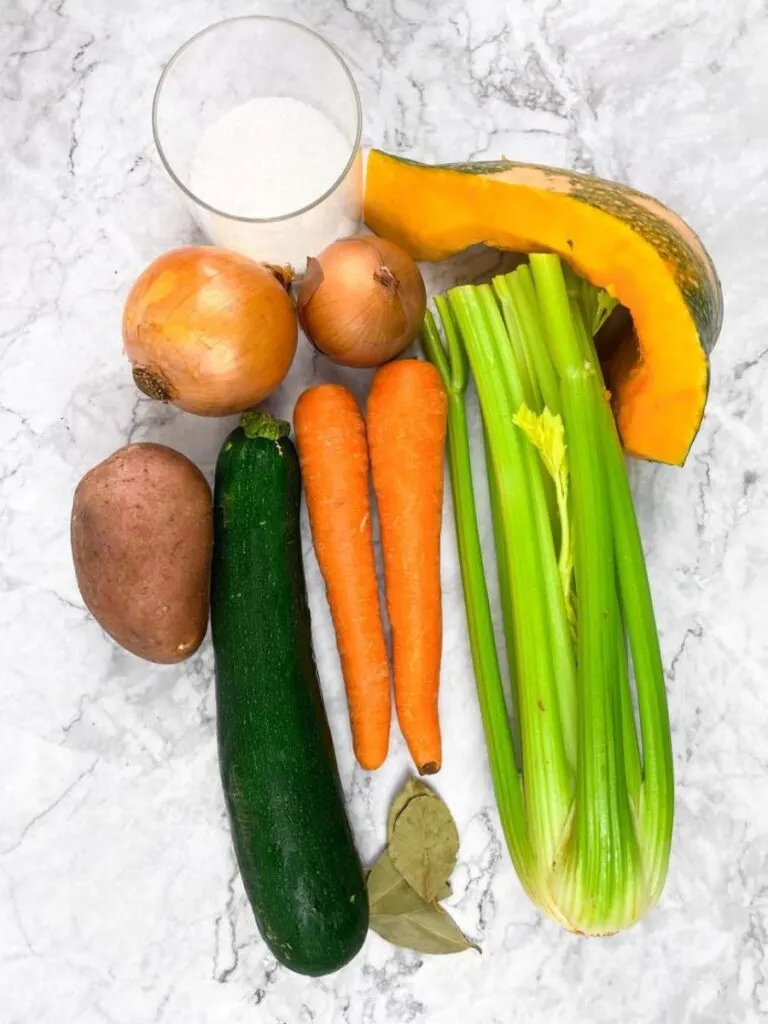
When it comes to creating homemade vegetable bouillon, the possibilities are endless.
Here’s a classic combination of ingredients to get you started:
Celery: Celery lends a pleasant and refreshing flavor to the bouillon,
Carrots: Carrots give a sweet note and a nice color to the bouillon.
Onions: Onions provide a savory and slightly sweet base for the bouillon.
Pumpkin (I use it because is in season): Pumpkin adds natural sweetness, perfect for autumn-inspired dishes.
Zucchini: Zucchini adds a mild and delicate flavor.
Potato: Potatoes contribute a creamy texture and help to thicken the bouillon.
Salt: It’s a natural preservative and helps as a flavor enhancer.
I use 1/5 salt over the 2 lb veggie, you may think it is a large amount of salt, but remember the end result is roughly 24 stock cubes.
Bay Leaf: The addition of bay leaf infuses the bouillon with a subtle herbal aroma.
Ingredient VARIATIONS
While the above combination forms a solid foundation for your vegetable bouillon, you can personalize it according to your taste and personal preference with your favorite vegetables.
I think the vegetable base must be carrots, onion, and celery as for the soffritto, consider adding ingredients such as mushrooms for an umami flavor.
Swap normal potato for sweet potato, parsnips, or butternut squash.
For an Asian twist, use ginger, and shiitake mushrooms.
Herbs like thyme, rosemary, marjoram, or other different herbs/spices can be added for extra seasoning.
HOW TO MAKE BOUILLON CUBES
Step 1
Wash, and cut the vegetables into small pieces.
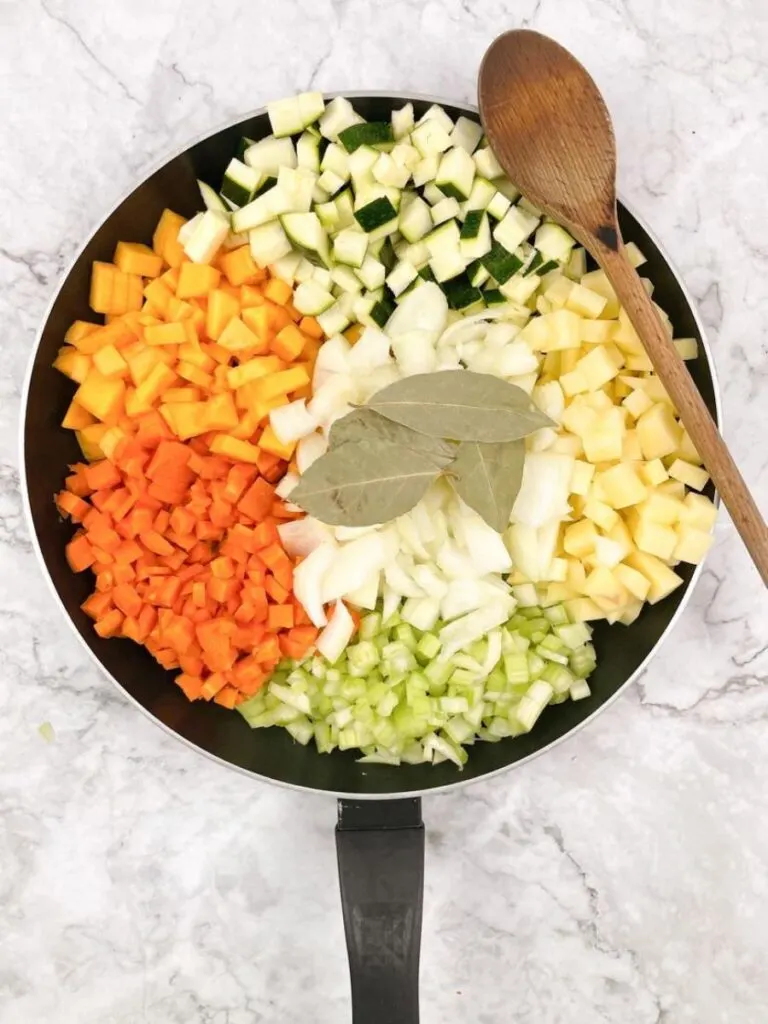
In a large skillet, add the vegetables and bay leaves to the oil.
Cook over medium/low heat until the vegetables have softened about 20 to 30 minutes.
Remove the bay leaf and add the salt.
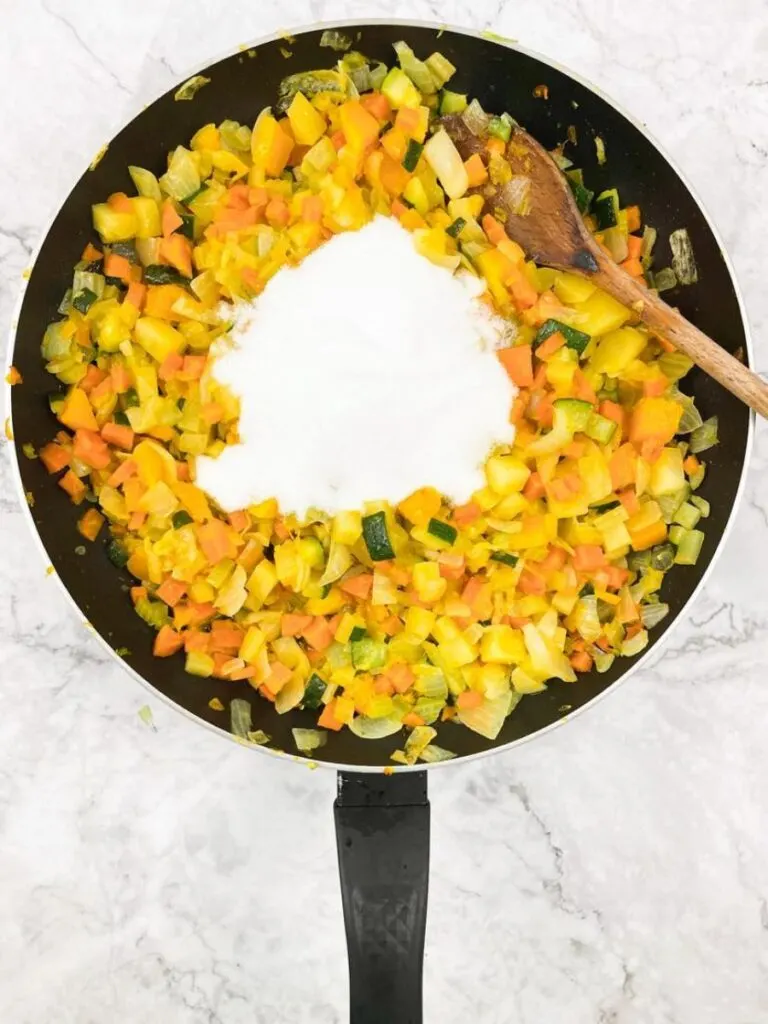
Blend the mixture until smooth with an immersion blender or regular blender.
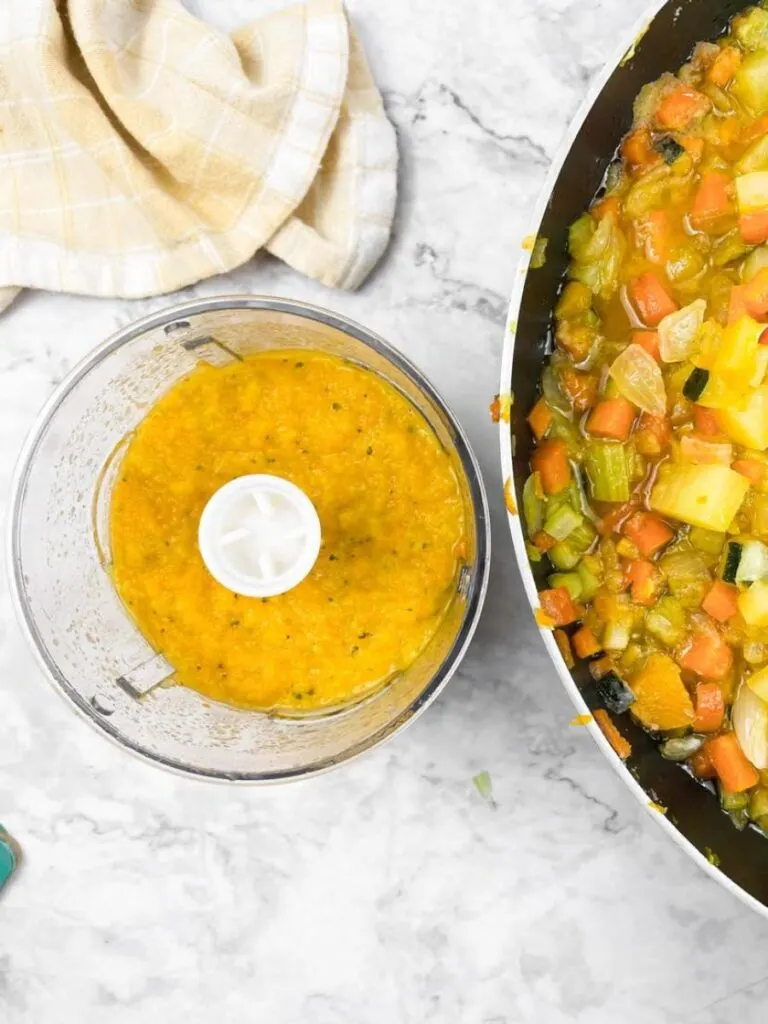
Return to the pan to allow all the water to be absorbed, about 15 minutes.
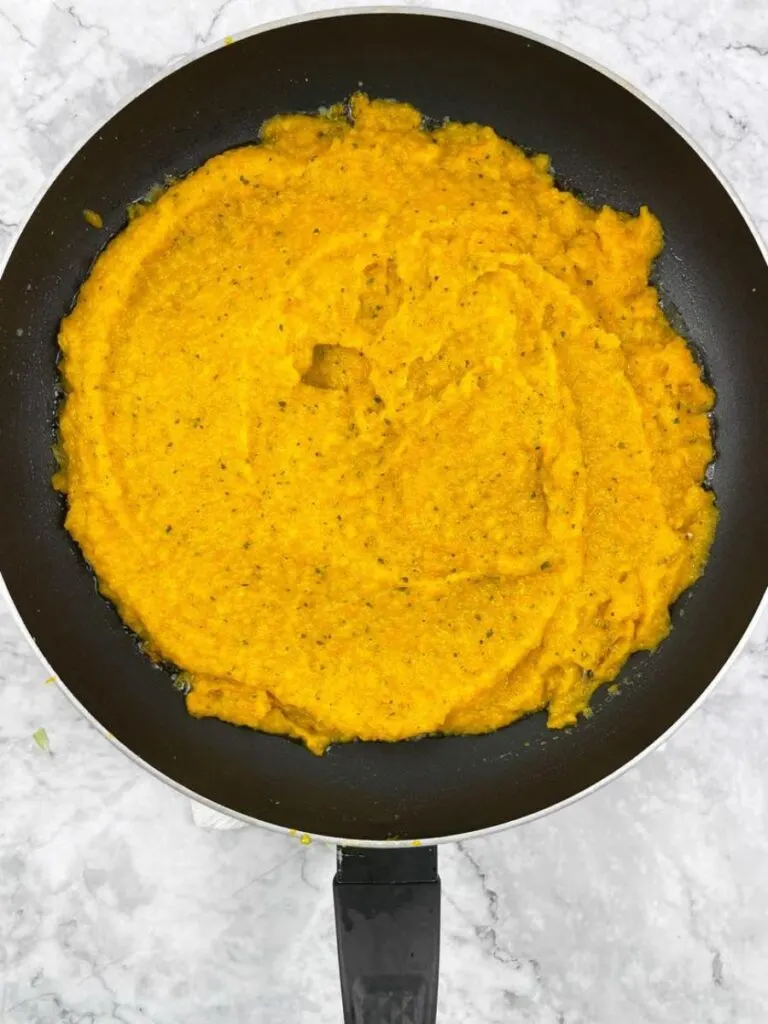
If making cubes, let the mixture cool slightly and pour it into a baking pan lined with baking paper, giving it a rectangular shape.
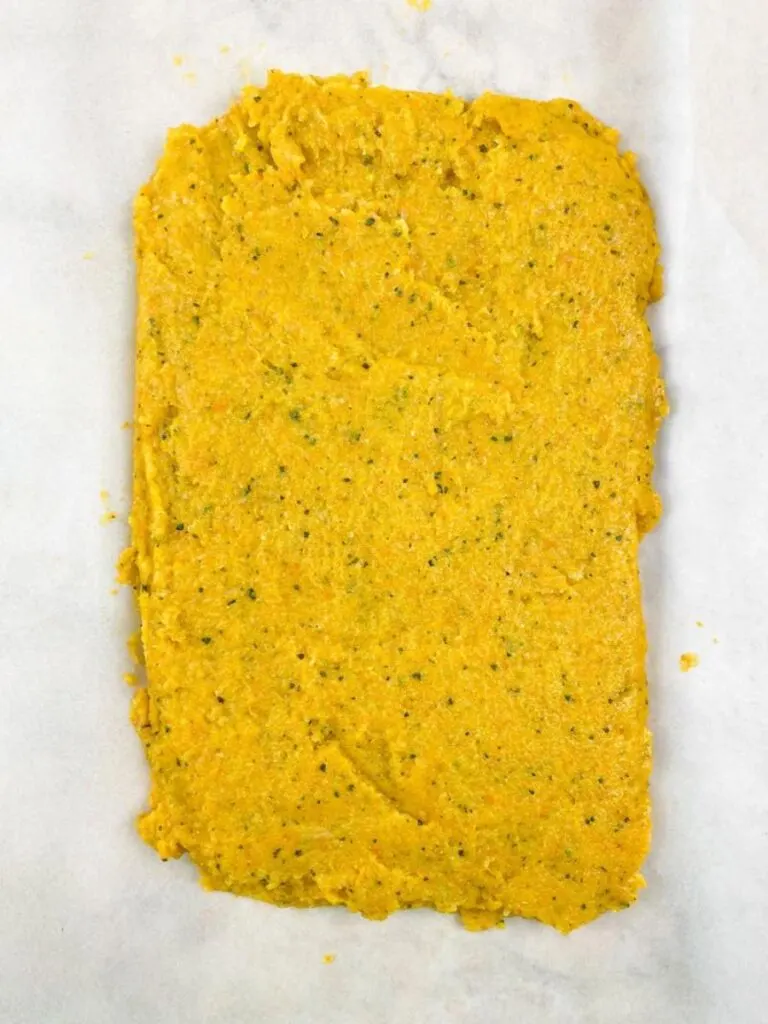
Let cool completely and freeze for 10 to 12 hours, so it will be easier to cut the cubes.
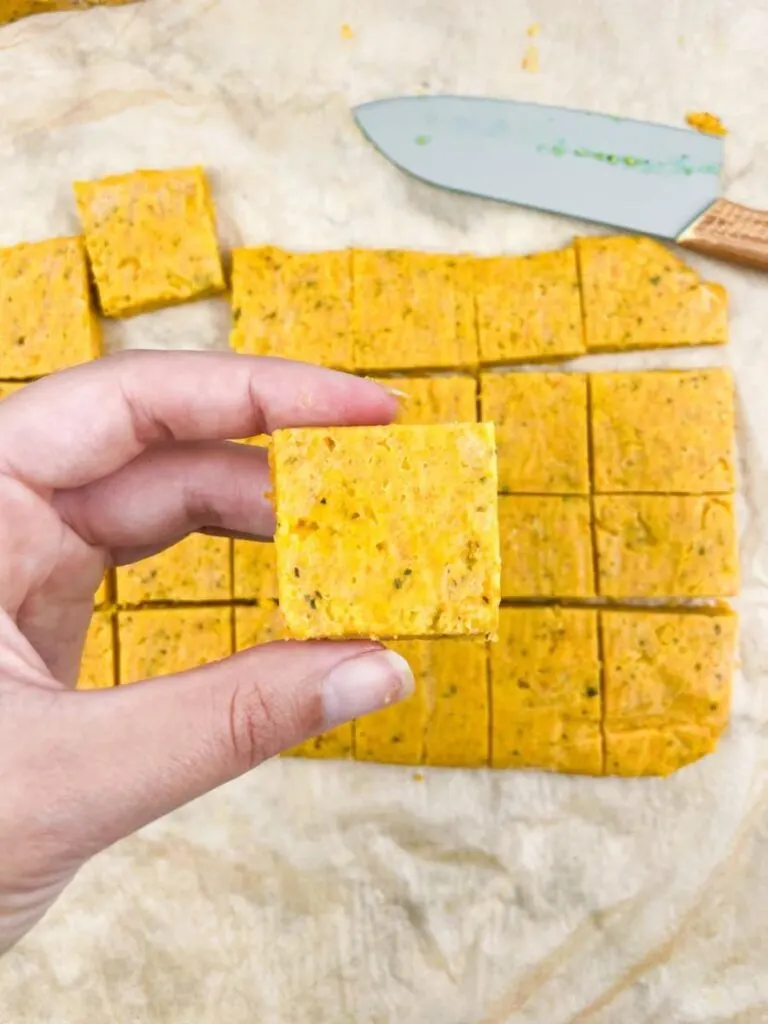
An easy way to make cubes is to pour the mixture into ice cube trays or silicone molds and freeze it.
Another way, especially if you have a large freezer, is to freeze them in spoon-sized portions.

TO DEHYDRATE INTO homemade vegetable bouillon powder
If you prefer the convenience of bouillon powder over cubes, here’s how you can make your own vegetable bouillon powder:
- Prepare the bouillon mixture as mentioned above.
- Spread the mixture evenly onto a dehydrator tray or baking sheet lined with parchment paper.
- Set the dehydrator or oven to a low temperature (around 140°F or 60°C) and allow the mixture to dehydrate until completely dry.
- The total drying process can take a long time and may vary depending on thickness, but let’s say 8-12 hours.
- Once dry, transfer the dehydrated mixture to a small food processor or spice grinder and pulse until it becomes a fine powder.
Best tips
- Label your homemade bouillon containers with the date to ensure freshness.
- Use seasonal and organic vegetables for the freshest and most flavorful bouillon.
How to store vegetable bouillon
Fresh vegetable bouillon: Keep in an airtight container in the refrigerator for up to 2-3 weeks.
Frozen Cubes: Wrap them with aluminum foil one by one, then transfer the cubes to an airtight container or freezer bag, use within 6 months.

Bouillon powder: Store the vegetable bouillon powder in a jar in a cool dark place, for up to 6 months.
HOW TO USE homemade vegetable bouillon cubes/POWDER
Using homemade bouillon cubes or powder is simple and versatile. Here’s how you can incorporate it into your cooking:
Make homemade vegetable stock: Mix with water to make a flavorful broth, it’s what I always use to make my tomato risotto.
Seasoning soup and stews: Add bouillon cubes or powder to your soups and stews. Perfect to make pasta e fagioli soup or this Old Fashioned Ham and Cabbage Soup with Potatoes.
Add more taste to Sauces and Gravies: Use bouillon cubes or powder to add depth and richness to your sauces and gravies.
Make more flavorful Rice and Grains: Dissolve bouillon cubes or powder in the cooking water for rice, quinoa, or other grains.
Seasoning Vegetables: Sprinkle a small amount of bouillon powder on roasted or sautéed vegetables for an extra burst of taste.
Marinades: Mix bouillon powder with olive oil, herbs, and spices to create flavorful marinades.
How much homemade bouillon powder should I use?
Generally, use about 1 teaspoon of bouillon powder per cup of water or broth.
Taste and adjust amounts to your preference.
How do I use the bouillon cube?
My recommendation is one per 4 cups of water.
Keep in mind homemade bouillon will be saltier than store-bought, so start with less and taste as you go.
FAQ’s
Can I make vegetarian or vegan bouillon cubes?
Yes, this recipe is 100% vegetable bouillon cube recipe.
I use vegetable-based ingredients and I omit any animal products to create a delicious vegetarian and vegan bouillon powder or cubes.
Can I adjust the salt content in homemade bouillon?
Absolutely! Adjust the salt according to your taste preferences, you can make a low-sodium version.
Can I omit the salt entirely?
Yes, you can make a salt-free version. But remember that salt helps bring out more flavor from the vegetables, so may taste somewhat bland without it.
Can I use fresh herbs in homemade bouillon?
Yes, fresh herbs like thyme, rosemary, or parsley can be added to enhance the flavors.
Can I use frozen vegetables to make homemade bouillon?
Yes, frozen vegetables can be used to make homemade bouillon.
vegetable bouillon recipe
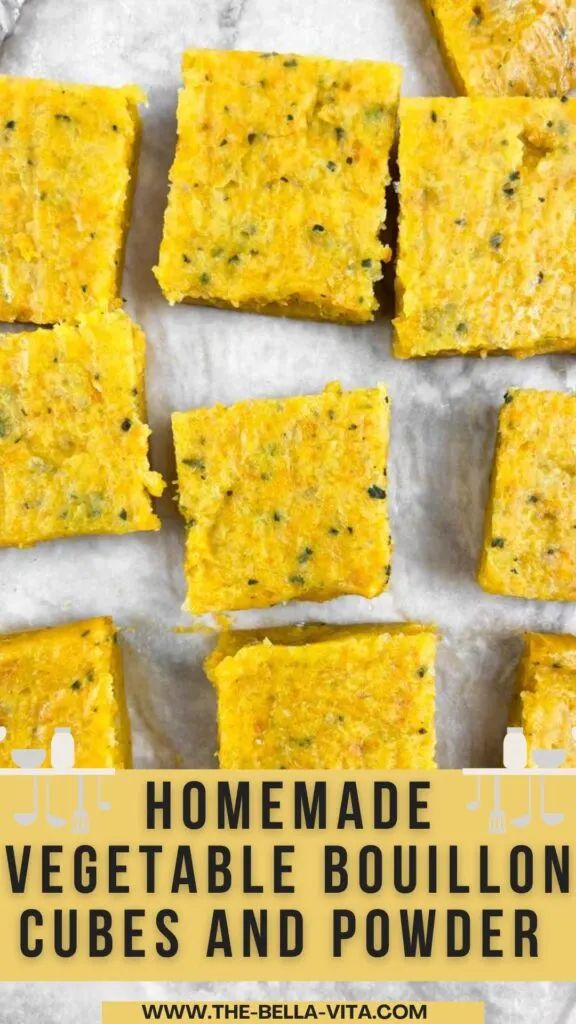
CONNECT WITH THE BELLA VITA!
Be sure to follow me on social media, so you never miss a post!
Facebook Group | Pinterest | Flipboard
Vegetable bouillon recipe
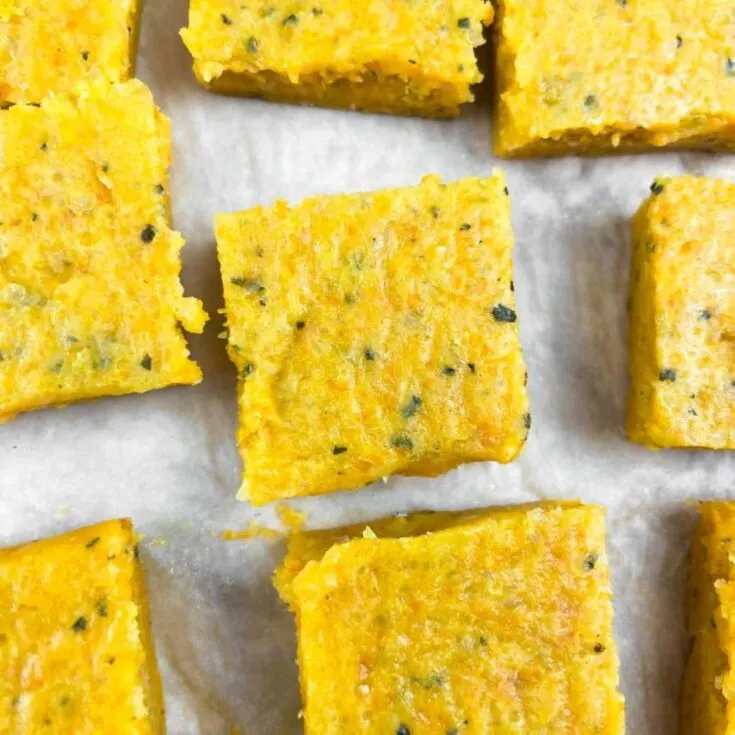
Ingredients
- 2 Tablespoon olive oil
- 3 bay leaves
- 6oz salt
2.2 lb Mixed Vegetables
- 2 carrots
- 1 zucchini
- onion2
- 1 potato
- 4 Celery sticks
- 5oz pumpkin
Instructions
- Wash and chop vegetables into 1/2-inch pieces.
- Heat olive oil in a large skillet over medium. Add vegetables and bay leaf and cook for 30 minutes, until very soft.
- Remove the bay leaf. Transfer vegetable mixture to a high-speed blender and puree until completely smooth.
- Return pureed vegetables to skillet and cook for 15 more minutes, stirring frequently, to evaporate excess liquid.
FOR CUBES:
- Pour mixture into a baking pan lined with parchment paper. Freeze until solid.
- Cut into cubes and wrap individually in tin foil. Transfer to an airtight container for storage.
FOR POWDER:
- Spread the pureed mixture onto dehydrator trays or baking sheets lined with parchment.
- Dehydrate at the lowest temperature, around 140°F or 60°C, can take between 8 and 12 hours.
- Transfer to a high-powered blender or food processor and pulse to a fine powder. Store in a sterilized dry jar.
Nutrition Information:
Yield:
24Serving Size:
1Amount Per Serving: Calories: 22Total Fat: 1gSaturated Fat: 0gTrans Fat: 0gUnsaturated Fat: 1gCholesterol: 0mgSodium: 2756mgCarbohydrates: 3gFiber: 1gSugar: 1gProtein: 0g
Nutrition is automatically calculated by Nutritionix - please verify all nutrition information independently and consult with a doctor or nutritionist for any and all medical and diet advice.


Jillian
Saturday 28th of October 2023
Impressive homemade vegetable bouillon recipe! Ditch store-bought for a healthier, preservative-free option. Saw this gem in Bella Vita's Facebook group – a must-try! Highly recommended!
Angie
Saturday 28th of October 2023
Thanks so much for the kind words! I'm so glad you found the homemade vegetable bouillon recipe in my Facebook group. Good community for food lovers :)
Jean
Friday 27th of October 2023
The blend of fresh ingredients creates a flavorful base that beats store-bought options. I love the versatility of using cubes or powder, and it's a healthier, preservative-free choice. Highly recommended!
Angie
Friday 27th of October 2023
Thank you! I couldn't agree more! :)